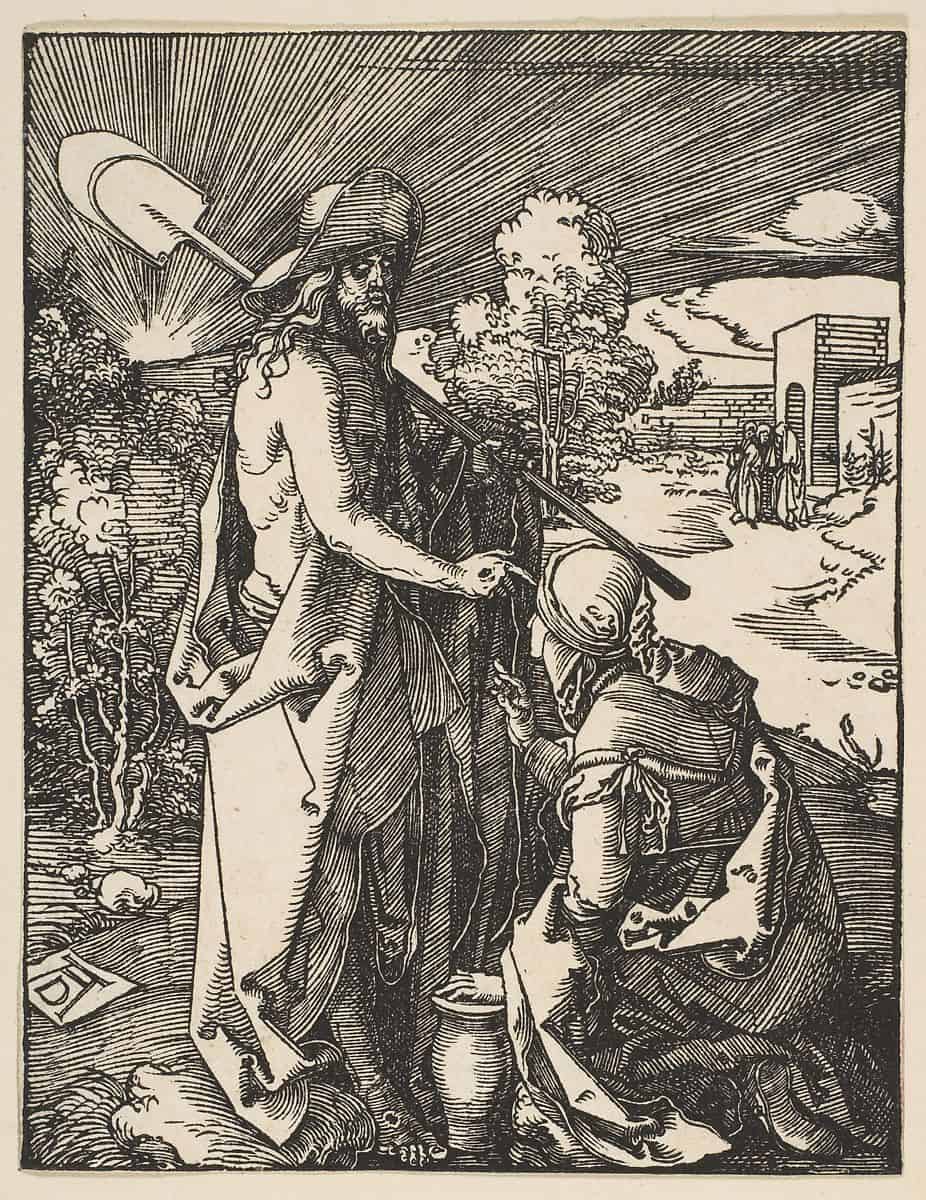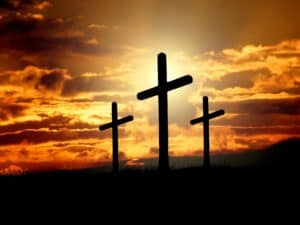You can listen to an audio version of this piece here.
I love gardening and one of the things I love about living in the northern hemisphere is that Easter coincides with the spring blossoming and planting seasons. I grew up in Australia, where Easter is in autumn and everything is slowly settling into winter. I will never forget the impact of my first Easter in the northern hemisphere. It was so spectacular. Daffodils bursting into bloom with bright yellow faces, cherries and apples and almonds beckoning the pollinators that will set the harvest and so many other spectacular blossoms that seem to live out the Easter story. This is what it is all about, I remember thinking. Life, death, and resurrection everywhere I look. The story of Easter week lived out all around me.
What I did not realize, until years later, is how clearly the story of creation is also lived out in Jesus’ walk through Holy Week. This discovery so impacted me that I encourage anyone I meet to get out into God’s garden world during Holy Week so that they too can reflect on this wonderful journey from garden to garden that Jesus took, no matter whether you are moving into spring or autumn.
She thought he was the gardener

In 1511, the German artist Albrecht Dürer fashioned a woodcut of Mary Magdalene’s encounter with the resurrected Jesus as depicted in John 20:15. In the passage, she goes to the garden tomb looking for Christ’s body and instead she finds a very much alive Jesus but she thought he was the gardener.
This phrase is not a throwaway line as many assume. It is of cosmic significance! Jesus is indeed the gardener of the new creation.
In the book of Genesis, God creates the garden of Eden and sculpts Adam and Eve out of its soil to tend and care for it (Genesis 2:15). It is there that God, the Cosmic Gardener, comes to walk, enjoy, and interact not just with the caretakers but also with all creation (Genesis 3:8). When Adam and Eve sin, they are expelled not just from the garden but also away from this beautiful, intimate relationship they once enjoyed with God.
Journey from the garden of suffering
Fortunately, God did not abandon creation or those created to look after it. The journey of Holy Week is a journey back into the garden of God. In fact, at the beginning of the week, on Palm Sunday, we catch a glimpse of that paradise world as the people wave palm branches and shout hosanna, their joy resounding with echoes of the Jewish festival of Sukkot, a harvest thanksgiving festival associated with Earth’s productivity and the abundance of the created world as God intends it to be.
Jesus’ suffering began in the garden of Gethsemane, a garden where his agony is poured out in drops of blood like sweat, that seep into the earth. His pain is symbolic of the pain and suffering that became a part of Adam and Eve’s lives when they were expelled from the garden of Eden.
Journey through the garden of death
On Good Friday there is another garden. Jesus, the second Adam, dies at Golgotha and John notes: in the place where he had been crucified there was a garden (John 19:41). Jesus’ death is like the planting of a seed in that garden: Unless a seed is planted in the soil and dies it remains alone, but its death will produce many new seeds, a plentiful harvest of new lives (John 12:24).
Journey into the garden of resurrection
Gardens aren’t places where seeds die. They’re also places of life and resurrection. As the Gospel of John tells the story, and the artist Dürer pictures it, Jesus very fittingly and beautifully appears to Mary Magdalene as the gardener. This is the garden of the resurrection, the new creation garden where the new world of God is revealed in all its glory and everything once more flourishes.
Whereas the Genesis story begins in a garden paradise and ends in our present garden world of pain and suffering, the Easter story begins in the garden of pain and suffering and ends in a garden of wholeness and flourishing, a new paradise in which we are once more able to walk intimately with our God and find abundant provision. In this new garden, Jesus, the head gardener, once more invites us to be who God created us to be—stewards of all creation, tending this new paradise of wholeness and abundance so that it once more flourishes for all the creatures of the earth to enjoy.
In Isaiah 65 and again in Revelation 22 we see beautiful pictures of this new garden of God. Life and freedom, wholeness and abundance flourish, and we look forward in hope to its completion.
Can we cooperate with Jesus the gardener?
The challenge we face is to cooperate with Jesus the gardener in the work of this garden. In many ways God’s new garden is still in its infancy and, like any newly formed garden, needs to be tended in order to flourish. Soil must be fertilized, seeds planted, watered, and nurtured. To see it completed we must willingly journey with Jesus from the garden of Gethsemane with its struggle and suffering, through the garden of death to the new life that begins in the garden of the resurrection.
The old Adam and Eve were excluded from the Garden of Eden by a barrier of angels with flaming swords. Jesus, the new Adam, ripped apart the barrier with his death and stands ready to welcome us into the new paradise garden. The barrier that separated us from the holy place of intimacy with God and God’s world has been removed. Now together with all God’s people and indeed with all God’s creation, we can enter into the intimacy of relationship with God in a restored world of wholeness and abundance. We must continue to till and fertilize the soil, plant seeds of freedom and generosity and wholeness until the fullness of the glory of God’s resurrection-created world is revealed.
 Christine Aroney-Sine is a contemplative activist, passionate gardener, and author. She loves inspiring Jesus followers to dig in the dirt, laugh, and have fun creating spiritual practices that intertwine the sacred through all of life. She’s the founder and facilitator for the popular contemplative blog godspacelight.com, and her most recent book is The Gift of Wonder: Creative Practices for Delighting in God.
Christine Aroney-Sine is a contemplative activist, passionate gardener, and author. She loves inspiring Jesus followers to dig in the dirt, laugh, and have fun creating spiritual practices that intertwine the sacred through all of life. She’s the founder and facilitator for the popular contemplative blog godspacelight.com, and her most recent book is The Gift of Wonder: Creative Practices for Delighting in God.


